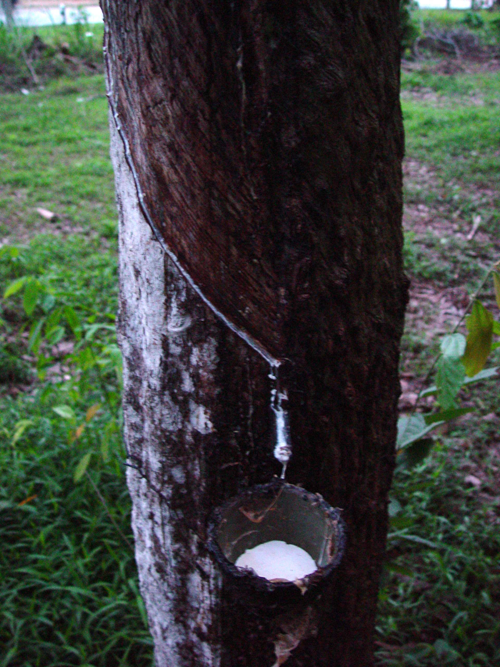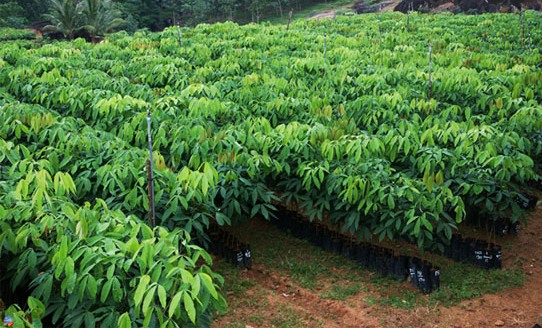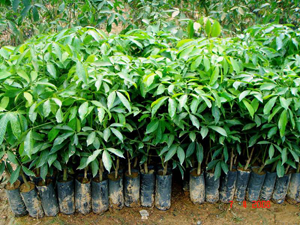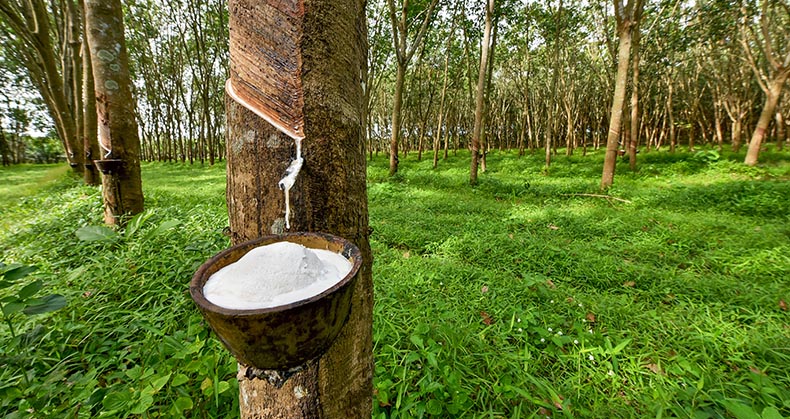What was the main crop grown on plantations. It is a typical plantation crop which means that it should be grown and harvested over large uniform areas 3000 to 5000ha around a central.

Horticulture Plantation Crops Rubber
By increasing the productivity of plantation companies leased out to.

Plantation crop rubber. There is a government scheme called Rubber Development in North East RDNE which focuses on new plantation of rubber in North East region. Later when the rubber seedlings. The young plant shows characteristic growth pattern of alternating period of rapid elongation and consolidated development.
The system demonstrates that the feeds such as the undergrowth or ground vegetation which forms part of the ecosystem of oil palm rubber acacia and coconut cultivation which are. Propagation methods for fruit and plantation crops. Here the term plantation or estate is used synonymously.
RUBBER NURSERY Rubber seedlings Rubber. Influence of plantation crops on soil properties in Tripura. Malaysia is the leading producer of natural rubber in the world.
Asia has a virtual monopoly in production of natural rubber producing nearly 95 percent of. The longer a crops harvest period the more efficient plantations become. Some of the main plantation crops are rubber oil palm cotton and copra beverages like coffee tea and cocoa fruits like pineapples and bananas as well as sugarcane hemp and jute.
First the seedlings were brought from the Amazon Basin and were planted here on a experimental basis. Natural Rubber Research 181. Through integration with plantation crops such as oil palm rubber acacia and coconut are very promising Sanchez 1995.
About 46 of the total worlds rubber is produced in Malaysia. Plantation agriculture is the product of colonialism. Multivariate analysis of variance indicated that there were significant differences among tree crop plantations.
In rubber plantation weeding is usually carried out manually or chemically or through a combination of both. In rubber plantations the weeds can be controlled either by manual or chemical means. The rubber plantation in Malaysia was started in Malaysia in 1877.
Definition in traditional sense Plantation crops are those which are cultivated on extensive scale like tea coffee and rubber. The following weedicides are used in rubber plantations. It has a straight trunk and thick somewhat soft light brownish gray bark.
The main weeds commonly found in rubber plantation are Axonopus Paspalum Digitaria Mikania Sida Pennisetum. Rubber Hevea brasiliensis is a fast-growing upright tropical tree crop which is mainly cultivated for its production of latex a milky plant liquid which serves as a basis for various rubber products. Rubber Plantation in Malaysia Introduction.
Rubber plantations constitute carbon stocks that can be compared to cocoa plantations or to some agroforestry or forestry systems. Support schemes will be introduced for all export crops. Differences between plantation crops vs.
Estate or plantation means large scale agricultural unit usually of a single crop. Calopagonium muconoides centrosema pubescens pueraria phaseoloides and desmodium evalifolium are common cover crops in rubber plantation. Rubber is a quick growing fairly sturdy perennial tree of a height of 25 to 30 m.
Growing ground cover crop is the most efficient practice for weed control in rubber in early stages. Rubber natural is the major plantation crop of Southeast Asia. A study modeling carbon sinks in rubber plantations with different rotation lengths concludes that longer rotations show increased soil carbon.
62 of our land. For young budding use smaller polybag 6 x 9 Spacing should be 30cm x 30cm 1 hectare nursery can accommodate 72000 points. Plantation economies rely on the export of cash crops as a source of income.
The fertilizer support scheme for all cash crops will be further extended. The crop has been an important foreign exchange earner for the region even after the severe competition with the synthetic rubber since 1940s. Layout and planting of fruits and plantation crops.
Cultivation strains of tea rubber coconuts and other export crops. A low-intensity planting programme will see our mature rubber trees increase from 46 million trees in 2020 to 13 million trees in 2030 yielding a production output increase from 19000mT in 2020 to 89000mT in 2030. Prominent crops included cotton rubber sugar cane tobacco figs rice kapok sisal and species in the genus Indigofera used to produce indigo dye.
Scarification and stratification of seeds. Traditional Region For Kerala Tamil Nadu and non-traditional regions other than North East mainly Karnataka Maharashtra Andhra Pradesh Goa Odisha and West Bengal there is a Rubber Plantation Development RPD scheme. Impact of different plantation crops on soil properties in Tripura was studied in comparison with barren land.
Inter-cropping In the first two years the land area is not fully occupied by the rubber plants and the inter spaces can be utilized for growing inter crops which do not interfere with the growth of rubber plants The common inter crops cultivated in rubber plantations are banana pineapple tuber crops ginger turmeric vegetables and medicinal plants. Nursery Seedlings A seedlings nursery is required for raising 2 or 4-6 whorls polybags planting material.

Know The Advantages Of Rubber And Rubber Seedlings Pb260 Alifandho

Ground View Characteristics Of Para Rubber Plantations Latex Download Scientific Diagram

Rubber Plantation Information Guide Agri Farming

Horticulture Plantation Crops Rubber

Nigeria S Rubber Plantation Going Extinct The Sun Nigeria

Horticulture Plantation Crops Rubber

Rubber Plantation Srg Farms Farmers



0 comments:
Post a Comment